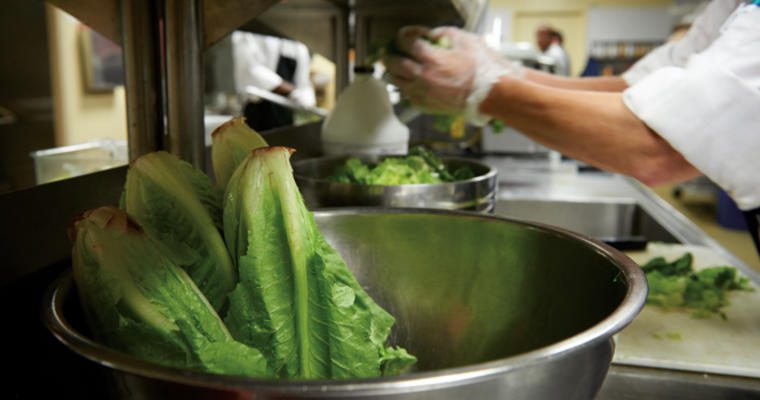Declining reimbursements and healthcare reform are forcing hospitals to take a closer look at their spending and find new ways to save money. One cost-effective solution is to review the hospital foodservice program. Managing this operation extensively can result in more savings and increased patient satisfaction.
Healthcare Food Cost Control
One major step: a complete investigation of what’s going on with food production. Healthcare foodservice managers must know how their current system is working in order to make cost-saving changes. Questions to Ask:
- Is scratch really cheaper than speed scratch or ready-to-eat?
- How much does it cost (in terms of labor and food costs) to produce recipes?
- What kinds of inventory does each recipe use?
- Are staffers using the right utensils to serve food?
Consulting with your healthcare foodservice distributor is also a good option.
What Operators Need to Know
Who is ordering what?
In this day and age of culture change, facilities must give residents and patients choices at meal times. Say pancakes are on the breakfast menu, but regularly only 10 percent of residents request them, meaning it’s probably not cost-effective to make them from scratch.
How long does it take to prepare the food?
Labor and food costs are entwined; labor-intensive foods, at the end of the day, cost more to put on the plate than foods that are easy on labor. You can’t have good food management unless you know how long it takes to make a recipe. It’s helpful to examine each dish to see if ready-to-eat is the wiser option.
What ingredients do you need?
Recipes should make use of what a facility buys regularly, not specialty one-off ingredients that appear once each menu cycle.
How do you properly scale a recipe?
Properly scaling recipes eliminates waste. A menu planning software, such as Cycle Menu Management, lets operators adjust a recipe to any serving size at the push of a button.
How does staff serve food?
Servers should use portion-control tools, such as a disher or a scoop clearly labeled with its weight.
Which “like” foods are high-cost versus low-cost?
All seemingly like foods are not created equal: pudding pie costs less than cream pie; cod costs less than salmon. Think in these terms when writing the menu.
Is meal delivery cost-effective?
Buffet and family-style services produce less waste because residents take only what they will eat. The key is to offer balanced foods so patients with all sorts of dietary requirements get the nutrition they need. An operation that switches to these styles need only wait one menu cycle to see results.
How do staffers treat leftovers?
Leftovers don’t increase food costs—until they end up in the trash, as waste. To manage leftovers, try buying colored tape and labels. Label Monday’s leftovers, for instance, with a blue label and put them in an area of the walk-in taped with blue. Repeat with orange for Tuesday, yellow for Wednesday, etc. That way, staff knows just at a glance which leftovers need to be used first.
Inventory Control
Inventory management is the only way to truly know if an operation’s projected cost per patient per day and the actual cost per patient per day match up. Plus, inventory is a great theft deterrent: staffers will be less likely to sneak home a steak if they know the cooler is being checked regularly.
Taking stock of what’s in the pantry and the cooler can also result in savings. Try using inventory manager software to help develop and maintain good inventory practices, including organizing count sheets, assigning inventory tags to items that need frequent inventorying, and evaluating and assessing inventory over a period of time.
More Food Cost Control Tips
How else to manage food cost control? Maximizing a Group Purchasing Organization (GPO) contract, if you have one. Many contracts include incentives, such as drop-size incentives, that customers aren’t aware of or aren’t taking advantage of. For instance, say a contract offers incentives at $2,500, $3,000, $4,000, and $5,000. An operation taking two $2,500 deliveries per week might consider taking one $5,000 delivery per week and getting the higher incentive if storage space is available.
Using the right product for an operation is the other. Supplements, for instance, come in sizes smaller than 8-ounces; if residents aren’t drinking all their supplement, it might be more cost-effective to buy 4-ounce or 6-ounce servings.
Though managing food costs takes time and attention, it can result in major savings—and an improved operation that is better able to serve and satisfy patients and residents.











